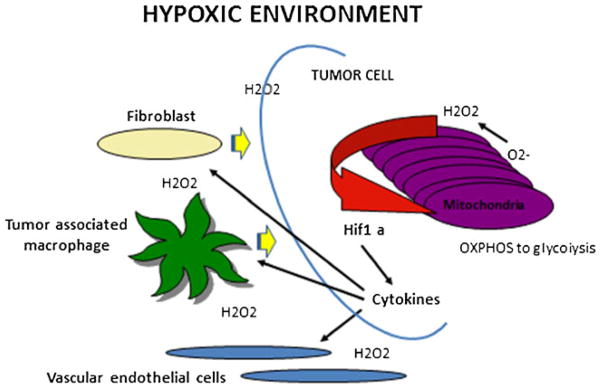Fig. 1.

An hypoxic tumor microenvironment drives cancer invasiveness through mitochondrial redox signaling. The production of super oxide by mitochondrial respiratory III complex increases under conditions of low oxygen, ie, hypoxia. Superoxide is not the main signal because most of it is rapidly converted to hydrogen peroxide by ample supplies of mitochondrial SOD2. Hydrogen peroxide can easily pass through mitochondrial and cellular membranes so it can act as a major signal from mitochondria to the cytosol and into the extracellular space to affect other cell types. In addition, hydrogen peroxide stabilizes HIF1 alpha thus leading to transcription of genes that code for pro-tumor cytokines that signal stromal cells such as macrophages and fibroblasts to support an invasive tumor cell phenotype. Hydrogen peroxide-mediated HIF1 alpha helps the tumor cell convert energy production from OXPHOS to glycolysis, a metabolic switch that has been associated with increased metastatic potential
